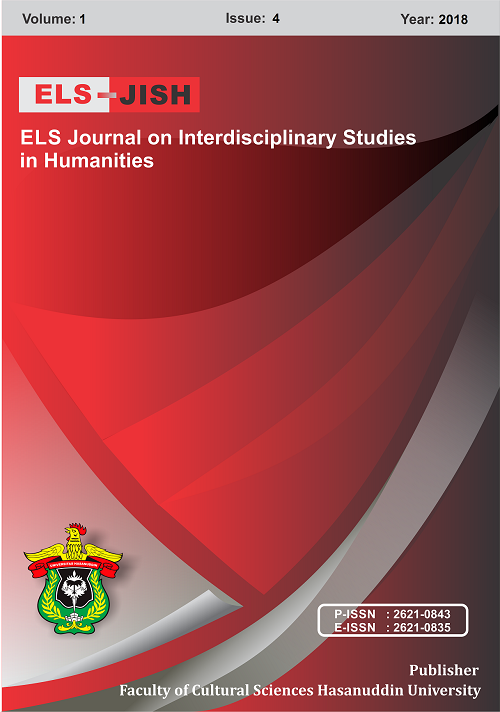Students’ Strategies in Reducing Anxiety in Learning English
DOI:
https://doi.org/10.34050/els-jish.v1i4.5047Keywords:
Students’ Strategies, anxiety in learning EnglishAbstract
The aims of this research is to know the level of anxiety faced by students at ABA-UMI, to know the factors cause anxiety, and to know the students’ strategies in reducing anxiety in learning English. This research used descriptive qualitative method. The writers focused on observing the level of anxiety faced by ABA students. The writers took two classes as the repondents in 2013-2014 academic years. The writers did classroom observation and interviewed nine (9) students who tended to feel anxious in learning English. The observation was conducted three meetings in speaking class and the writers used video recording to record and collect the data needed.The writers found three levels of anxiety faced by ABA students; they were mild anxiety, moderate anxiety and severe anxiety level. The first level can be seen in physical response from the students such as nervous, afraid, sweating, and embarrassed. But, the students could control their anxiety by motivating themselves to learn. The second level of anxiety was moderate level. The student did not participate in class (silent), cold hands and sweating. In this level, the students could control his/her anxiety so that he/she could participate in learning.And the last level of anxiety found was severe anxiety. The writers found that there were two students who felt anxious. The students had different symptoms such as cold hands, sweating, and their head feel heavy. This anxiety appeared when students could not overcome his/her worry. In this level, the students could not control their anxiety so that they could not participate even avoid the learning activity.Downloads
Download data is not yet available.
Downloads
Published
2018-12-26
How to Cite
Sulastri, S., & Ratnawati, R. (2018). Students’ Strategies in Reducing Anxiety in Learning English. ELS Journal on Interdisciplinary Studies in Humanities, 1(4), 423-428. https://doi.org/10.34050/els-jish.v1i4.5047
Issue
Section
Articles

















